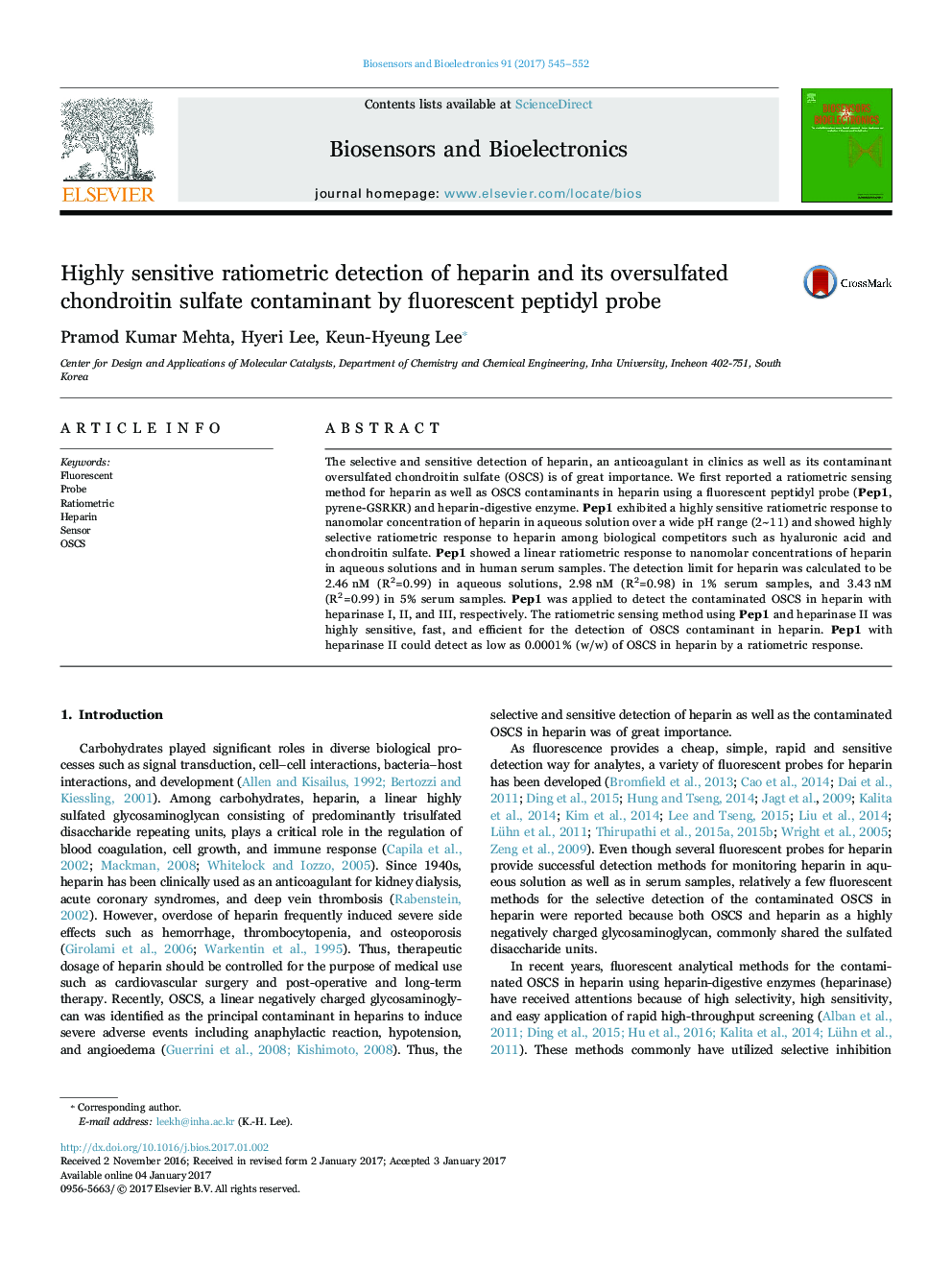| Article ID | Journal | Published Year | Pages | File Type |
|---|---|---|---|---|
| 5031191 | Biosensors and Bioelectronics | 2017 | 8 Pages |
Abstract
The selective and sensitive detection of heparin, an anticoagulant in clinics as well as its contaminant oversulfated chondroitin sulfate (OSCS) is of great importance. We first reported a ratiometric sensing method for heparin as well as OSCS contaminants in heparin using a fluorescent peptidyl probe (Pep1, pyrene-GSRKR) and heparin-digestive enzyme. Pep1 exhibited a highly sensitive ratiometric response to nanomolar concentration of heparin in aqueous solution over a wide pH range (2~11) and showed highly selective ratiometric response to heparin among biological competitors such as hyaluronic acid and chondroitin sulfate. Pep1 showed a linear ratiometric response to nanomolar concentrations of heparin in aqueous solutions and in human serum samples. The detection limit for heparin was calculated to be 2.46Â nM (R2=0.99) in aqueous solutions, 2.98Â nM (R2=0.98) in 1% serum samples, and 3.43Â nM (R2=0.99) in 5% serum samples. Pep1 was applied to detect the contaminated OSCS in heparin with heparinase I, II, and III, respectively. The ratiometric sensing method using Pep1 and heparinase II was highly sensitive, fast, and efficient for the detection of OSCS contaminant in heparin. Pep1 with heparinase II could detect as low as 0.0001% (w/w) of OSCS in heparin by a ratiometric response.
Related Topics
Physical Sciences and Engineering
Chemistry
Analytical Chemistry
Authors
Pramod Kumar Mehta, Hyeri Lee, Keun-Hyeung Lee,
